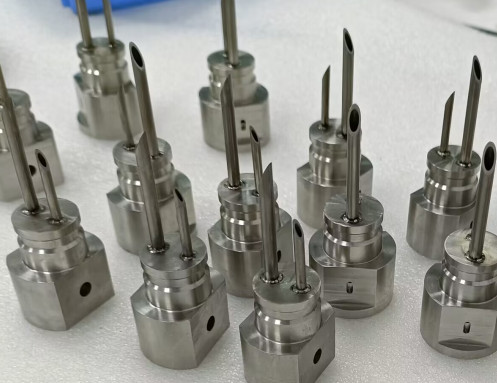Hastelloy, a family of nickel-based superalloys, is widely used in industries such as aerospace, chemical processing, and oil and gas due to its exceptional corrosion resistance, high-temperature strength, and durability. However, machining Hastelloy presents unique challenges due to its material properties. This guide provides a detailed, technical overview of Hastelloy machining, including alloy types, machining techniques, and specific difficulties, supported by precise parameters to ensure optimal results in manufacturing processes.
Overview of Hastelloy Alloys
Hastelloy alloys are primarily composed of nickel, with significant additions of chromium, molybdenum, and other elements like iron, cobalt, and tungsten. These alloys are engineered for extreme environments, offering resistance to pitting, crevice corrosion, and stress corrosion cracking. The unique composition of Hastelloy makes it ideal for applications in harsh chemical and high-temperature conditions, but it also contributes to its machining complexity.
The main Hastelloy grades are categorized into families, such as B, C, and X series, each tailored for specific applications. Understanding the composition and properties of these grades is critical for selecting appropriate machining strategies.
Main Types of Hastelloy Alloys
The following table summarizes the primary Hastelloy grades, their compositions, and key applications:
| Alloy Grade | Composition (%) | Key Properties | Applications |
|---|---|---|---|
| Hastelloy B-2 | Ni: 68, Mo: 28, Fe: 2, Cr: 1 | High resistance to hydrochloric acid, good ductility | Chemical processing, herbicide production |
| Hastelloy C-276 | Ni: 57, Mo: 16, Cr: 16, Fe: 5, W: 4 | Resistant to pitting, stress corrosion cracking | Petrochemical, marine, waste treatment |
| Hastelloy C-22 | Ni: 56, Cr: 22, Mo: 13, Fe: 3, W: 3 | Enhanced resistance to oxidizing acids | Chemical reactors, flue gas desulfurization |
| Hastelloy X | Ni: 47, Cr: 22, Fe: 18, Mo: 9 | High-temperature strength, oxidation resistance | Aerospace engine components, gas turbines |
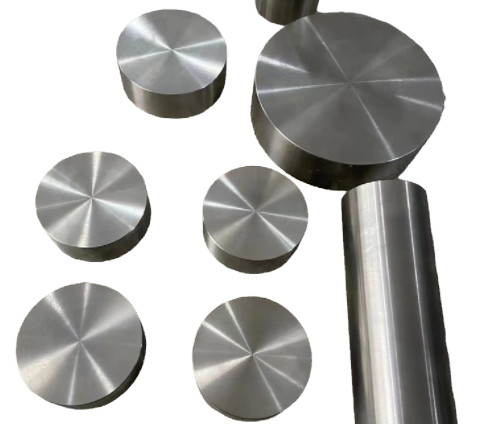
Machining Techniques for Hastelloy
Machining Hastelloy requires specialized techniques due to its high strength, work-hardening tendencies, and low thermal conductivity. Common machining processes include CNC turning, milling, drilling, and threading. Each process demands careful consideration of tooling, cutting parameters, and cooling methods to achieve precision and extend tool life.
CNC Turning
CNC turning is widely used for creating cylindrical Hastelloy components, such as shafts and fittings. The process involves rotating the workpiece while a cutting tool removes material. Key considerations include:
- Tool Selection: Carbide tools with positive rake angles are recommended for most turning operations. For high-temperature alloys like Hastelloy X, ceramic tools (e.g., SiAlON or whisker-reinforced ceramics) can enhance performance at higher speeds.
- Cutting Parameters: Surface speeds should range from 60–70 ft/min (0.30–0.35 m/s) for carbide tools and up to 6300 ft/min (32 m/s) for ceramic tools in roughing operations. Feed rates typically vary from 0.005–0.010 in/rev (0.13–0.25 mm/rev), with depths of cut between 0.05–0.10 in (1.3–2.5 mm) for roughing and 0.010–0.015 in (0.25–0.38 mm) for finishing.
- Coolant: High-pressure coolant (HPC) systems, delivering 1000–3000 psi, are essential to manage heat and prevent tool wear. Sulfur-based cutting fluids are particularly effective for Hastelloy C-276.
CNC Milling
CNC milling is used for creating complex geometries, such as slots and contours, in Hastelloy components. The process requires robust machine rigidity to handle the alloy’s toughness. Key considerations include:
- Tool Selection: Use carbide end mills with heat-resistant coatings, such as TiAlSiN or AlTiN, to withstand high cutting temperatures. For roughing, cobalt roughers can be effective on rigid setups.
- Cutting Parameters: Surface speeds of 50–100 ft/min (0.25–0.50 m/s) are typical for carbide tools, with feed rates of 0.002–0.004 in/tooth (0.05–0.10 mm/tooth). Trochoidal toolpaths are recommended to maintain constant chip loads and reduce heat buildup.
- Coolant: High-pressure coolant or minimum quantity lubrication (MQL) reduces thermal stress and improves surface finish. Dry machining with ceramic tools is viable for high-speed roughing.
Drilling
Drilling Hastelloy is challenging due to its tendency to work-harden and generate heat. Precision drilling is critical for applications like aerospace fasteners. Key considerations include:
- Tool Selection: Carbide-tipped or high-speed steel drills are suitable, with carbide preferred for larger diameters (≥0.25 in or 6.4 mm). Specialized drills, such as those with TiAlN coatings, improve performance.
- Cutting Parameters: Surface speeds of 30–35 ft/min (0.15–0.18 m/s) for carbide drills and 8–10 ft/min (0.04–0.05 m/s) for high-speed steel drills are recommended. Feed rates should be 0.004 in/rev (0.1 mm/rev) for diameters ≥0.25 in (6.4 mm).
- Coolant: Through-tool coolant systems are critical to evacuate chips and reduce heat. A 10–12% concentration of water-soluble coolant is optimal.
Threading
Threading Hastelloy, particularly for high-precision applications, requires careful tool selection and parameter control to avoid issues like poor surface finish or tool chipping. Thread milling is often preferred over tapping for better control. Key considerations include:
- Tool Selection: Use high-nickel taps (e.g., Emuge taps) or thread mills with positive rake angles and heat-resistant coatings.
- Cutting Parameters: Maintain low surface speeds (20–30 ft/min or 0.10–0.15 m/s) and consistent feed rates to prevent work hardening. A two-pass approach (roughing and finishing) is recommended for thread milling.
- Coolant: High-pressure coolant or neat oil designed for nickel alloys ensures proper chip evacuation and reduces friction.
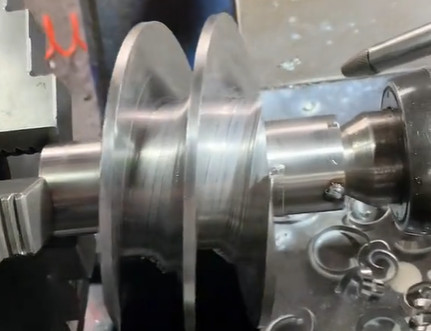
Difficulties in Machining Hastelloy
Hastelloy’s unique properties, while advantageous for end-use applications, pose significant machining difficulties. The following sections detail the primary challenges and strategies to address them.
Work Hardening
Hastelloy alloys, particularly C-276 and C-22, exhibit rapid work hardening during machining. Plastic deformation at the cutting edge increases material hardness, leading to increased cutting forces and tool wear. To mitigate this:
- Use heavy, constant feeds to maintain positive cutting action.
- Ensure sharp tools with minimal edge hone to reduce surface stress.
- Avoid dwelling the tool in the cut, as this exacerbates hardening.
High Heat Generation
Hastelloy’s low thermal conductivity results in significant heat buildup at the cutting zone, accelerating tool wear and affecting surface quality. Strategies to manage heat include:
- Employ high-pressure coolant systems to dissipate heat effectively.
- Use ceramic tools for high-speed machining, as they withstand elevated temperatures better than carbide.
- Implement trochoidal toolpaths in milling to minimize heat concentration.
Tool Wear and Life
The high shear strength and abrasiveness of Hastelloy alloys cause rapid tool wear, particularly with carbide tools. A wear land of 0.015 in (0.38 mm) is considered the threshold for a dull tool. To extend tool life:
- Select tools with advanced coatings (e.g., TiAlSiN) for better wear resistance.
- Monitor tool condition closely and replace inserts preemptively.
- Use ceramic tools for roughing operations to reduce wear in high-speed conditions.
Surface Finish Challenges
Achieving a high-quality surface finish on Hastelloy components is difficult due to work hardening and heat generation. Common issues include burrs, flashing, and the “orange peel” effect. To improve surface finish:
- Use finishing tools with slight edge hones (e.g., 0.001 in or 0.025 mm) to shear material cleanly.
- Employ MQL or high-pressure coolant to reduce friction and thermal distortion.
- Schedule roughing and finishing operations separately to allow material stress relaxation.
Recommended Machining Parameters
The following table provides general machining parameters for Hastelloy alloys, applicable to CNC turning, milling, and drilling:
| Process | Tool Type | Surface Speed (ft/min) | Feed Rate | Depth of Cut (in) | Coolant |
|---|---|---|---|---|---|
| Turning | Carbide | 60–70 | 0.005–0.010 in/rev | 0.05–0.10 (rough), 0.010–0.015 (finish) | High-pressure (1000–3000 psi) |
| Milling | Carbide/Ceramic | 50–100 (carbide), up to 6300 (ceramic) | 0.002–0.004 in/tooth | 0.05–0.10 | HPC or MQL |
| Drilling | Carbide-tipped | 30–35 | 0.004 in/rev | 0.05–0.10 | Through-tool coolant |
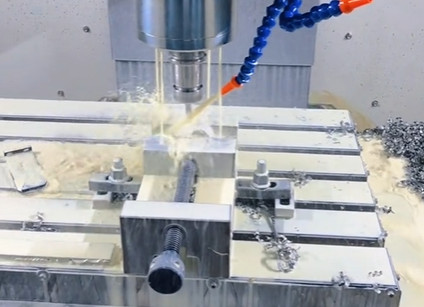
Best Practices for Machining Hastelloy
To achieve optimal results when machining Hastelloy, adhere to the following best practices:
- Machine Rigidity: Use rigid, high-horsepower machines to minimize vibration and deflection. Older machines with box ways, such as Mitsui Seiki or Mori Seiki, are often preferred for their stability.
- Tool Maintenance: Regularly inspect and replace tools to prevent defects caused by wear. Separate roughing and finishing tools to maintain precision.
- Coolant Management: Maintain coolant concentration (10–12% for water-soluble fluids) and filter out contaminants to ensure effective heat dissipation.
- Process Planning: Schedule roughing and finishing operations separately to account for material stress relaxation, especially for large or forged parts.
- Toolpath Optimization: Use trochoidal or adaptive toolpaths in milling to reduce heat and maintain consistent chip loads.
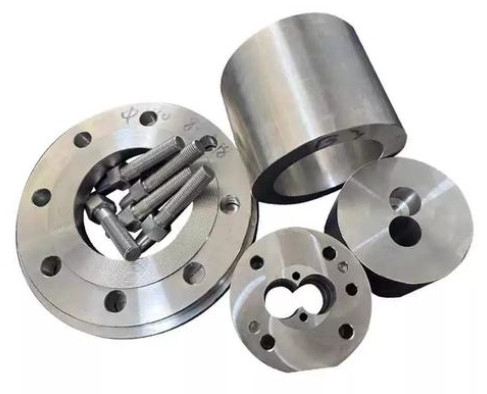
Applications of Machined Hastelloy Components
Machined Hastelloy components are integral to industries requiring high-performance materials. Key applications include:
- Aerospace: Engine components, fasteners, and structural honeycombs due to high-temperature strength and creep resistance.
- Chemical Processing: Reactors, boilers, and piping systems for handling corrosive acids and chemicals.
- Oil and Gas: Valves, fittings, and tubing in harsh environments like offshore platforms.
- Pharmaceuticals: Equipment for drug manufacturing, where cleanability and corrosion resistance are critical.
Conclusion
Machining Hastelloy requires a deep understanding of its material properties, precise control of cutting parameters, and robust equipment. By selecting appropriate tools, optimizing cutting speeds and feeds, and managing heat through effective cooling strategies, manufacturers can overcome the inherent difficulties of work hardening, high heat generation, and tool wear. This guide provides a systematic approach to machining Hastelloy, supported by detailed parameters and best practices, ensuring high-quality components for demanding applications.
Frequently Asked Questions About Hastelloy
What is Hastelloy?
Hastelloy is a trademark of Haynes International, USA, referring to a series of nickel-based corrosion-resistant alloys. Its main component is nickel, with varying proportions of alloying elements such as molybdenum, chromium, iron, and cobalt. These alloying elements work synergistically to endow Hastelloy alloys with excellent corrosion resistance, high-temperature resistance, and good mechanical properties, allowing them to remain stable in extreme environments.
What are the main series and common grades of Hastelloy?
(1) Main Series
B Series (Nickel-Molybdenum Alloys): Primarily designed for fully reducing environments, offering exceptional corrosion resistance. For example, B-2 and B-3 alloys have excellent tolerance to reducing acids like hydrochloric acid.
C Series (Nickel-Chromium-Molybdenum Alloys): The most widely used, suitable for environments with both oxidizing and reducing media. Examples include C-276, C-22, and C-2000 alloys.
G Series (Nickel-Chromium-Iron Alloys, except G-35): High chromium content provides superior oxidation resistance. Newer G series alloys (e.g., G-30, G-35) have good pitting resistance and are widely used in strongly oxidizing environments and complex mixed acid conditions.
D Series (Nickel-Chromium-Silicon Alloys): Containing a certain amount of silicon, they can form a stable oxide film on the surface, suitable for extremely strong oxidizing environments. However, these alloys cannot be welded. For instance, D-205 is mainly used in plate heat exchangers for concentrated sulfuric acid environments.
(2) Common Grades
C-276: One of the most commonly used alloys, with excellent corrosion resistance to wet chlorine, hypochlorites, chlorine dioxide solutions, etc. It is widely used in chemical processing, resisting erosion from various strong acids, alkalis, and chloride environments.
C-22: Has better overall corrosion resistance compared to other alloys, withstanding erosion from various chemicals and acids, commonly used in chemical and petrochemical applications.
C-2000: Added with a small amount of copper, enhancing corrosion resistance to various chemicals and acids, especially outstanding in reducing environments. It is often used in reactors and heat exchangers.
B-2: With low carbon and silicon content, it is suitable for welding and usually processed after annealing. It has wide applications in chemical, petrochemical, energy manufacturing, and pollution control industries.
X: Exhibits excellent high-temperature strength and oxidation resistance, commonly used in gas turbine engines and other fields requiring high-temperature tolerance.
What is the price situation of Hastelloy alloys?
Due to their special composition and performance requirements, Hastelloy alloys have complex production processes and high raw material costs, so their prices are generally higher than ordinary metal materials such as stainless steel. Their prices are affected by many factors:
Alloy Grade: Different grades of Hastelloy alloys have different prices due to differences in composition and performance. For example, grades containing scarce alloying elements or with extremely high performance requirements, such as C-2000, have relatively high prices; while C-276, which is widely used and has relatively common composition, has a relatively moderate price among Hastelloy alloys but is still higher than ordinary alloys.
Market Supply and Demand Relationship: When the market demand for Hastelloy alloys is strong and production capacity is limited, prices will rise; conversely, if market demand is insufficient and supply exceeds demand, prices may fall. For example, when the demand for Hastelloy alloys suddenly increases in some emerging industries and manufacturers' production capacity cannot keep up in time, prices will fluctuate.
Fluctuations in Raw Material Prices: Fluctuations in the prices of main raw materials of Hastelloy alloys, such as nickel, molybdenum, and chromium, will directly affect their production costs and thus the product prices. For example, a sharp increase in nickel prices will lead to a corresponding rise in Hastelloy alloy prices.
Product Form and Specification: Different product forms (such as plates, pipes, bars, etc.) and specification sizes have different processing difficulties and costs, resulting in different prices. Generally, products with special specifications or customized products have higher prices.
What advantages do Hastelloy alloys have compared to other alloys (such as stainless steel)?
Corrosion Resistance: Hastelloy alloys perform far better than stainless steel in extreme corrosive environments. Taking C-276 as an example, in a boiling 10% hydrochloric acid solution, its annual corrosion rate is only 0.13mm, while that of 316L stainless steel is as high as 25mm. Hastelloy alloys can withstand various highly corrosive media, including wet chlorine, hypochlorites, and mixed acids, while stainless steel may corrode rapidly in these environments.
High-Temperature Performance: At high temperatures, Hastelloy alloys can maintain higher strength and stability. For example, when 304 stainless steel starts to soften significantly at 400°C, Hastelloy C-276 can still maintain a tensile strength of about 450MPa, a yield strength of 220MPa, and an elongation of over 35% at 600°C, making it more suitable for long-term work in high-temperature environments.
Resistance to Special Media Corrosion: Hastelloy alloys have stronger tolerance to some special media, such as solutions with high concentrations of chloride ions and fluoride ions. Some Hastelloy alloys can withstand fluoride media and concentrated sulfuric acid, which can cause severe damage to some stainless steels or other alloys.
